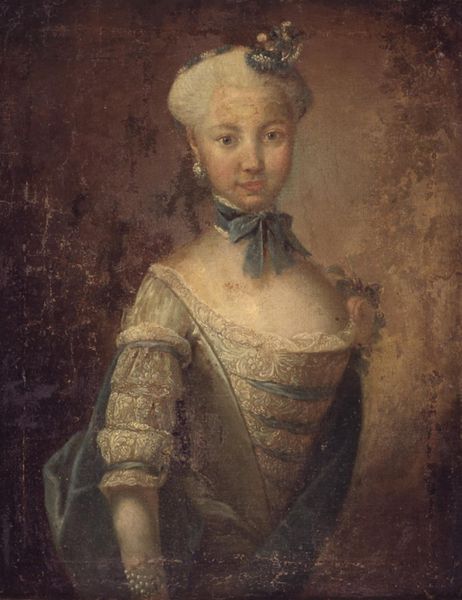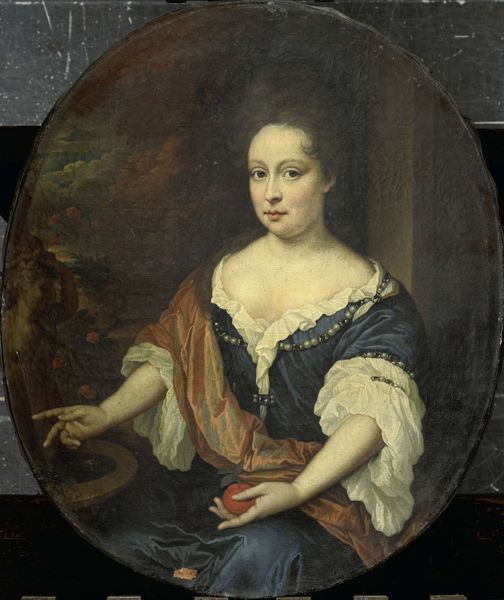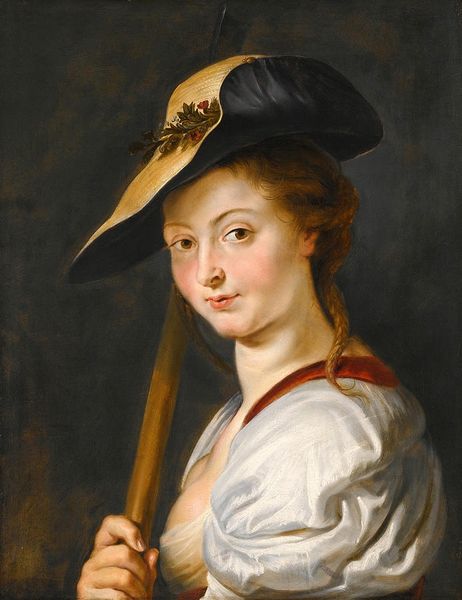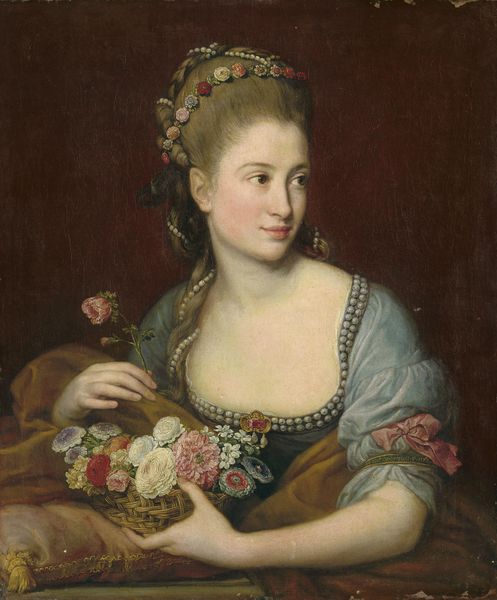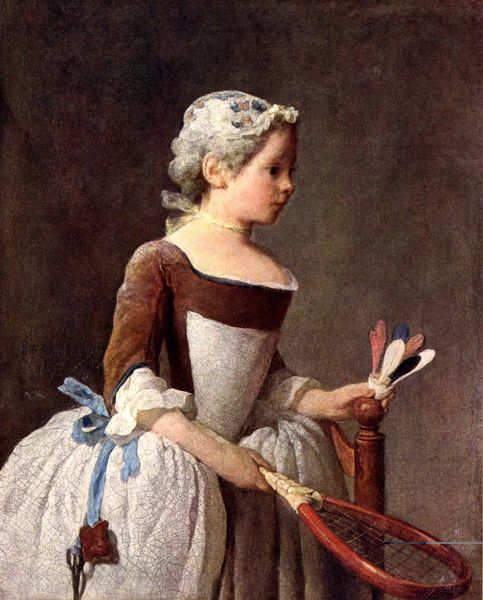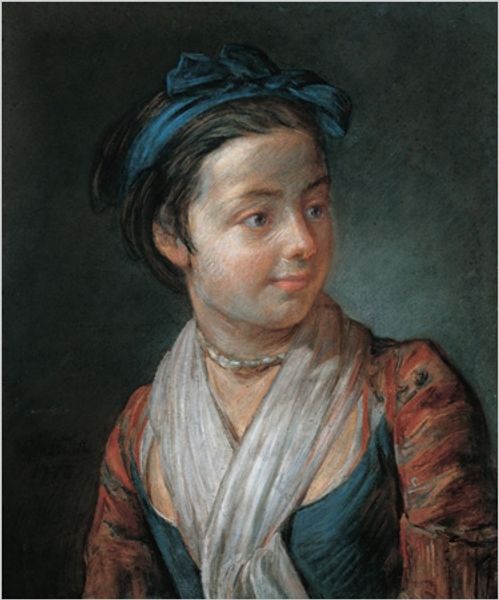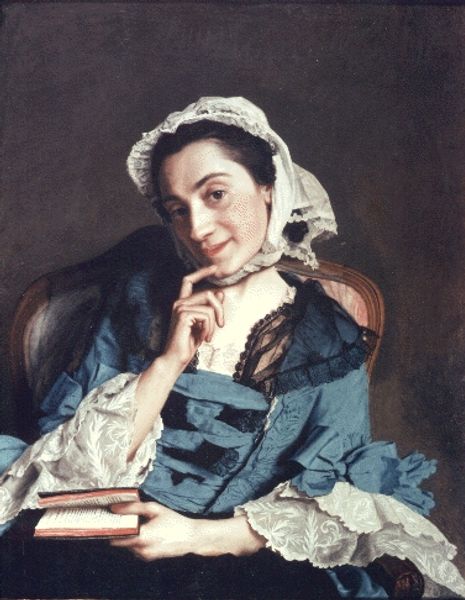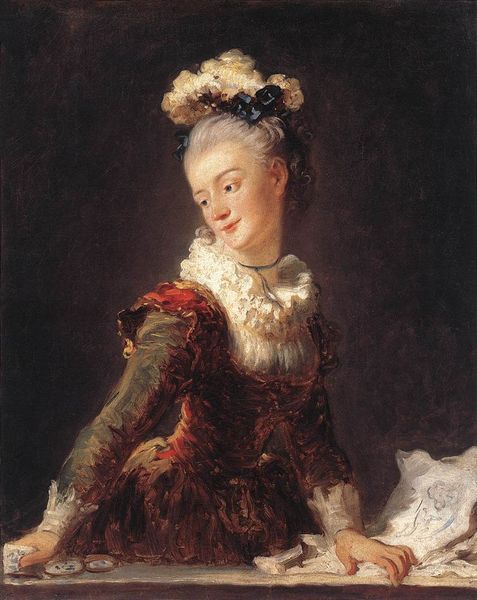
painting, watercolor
#
portrait
#
figurative
#
painting
#
oil painting
#
watercolor
#
genre-painting
#
portrait art
#
rococo
Copyright: Public Domain: Artvee
Editor: So, this is Fragonard’s "The Girl with the Marmot." It's an oil painting, although the soft application almost makes it look like watercolor. There's a sweetness to the girl’s expression and how the colours blend; what details strike you in particular? Curator: It is instructive to observe how Fragonard employs chiaroscuro to create a visually appealing design, particularly regarding tonality. The subject emerges from an indeterminable location to emphasize a structured understanding. Note the way the composition directs one's gaze toward the girl's face by framing the canvas diagonally and following an S-curve starting from her raised arms to the subject’s smile. Don’t you find this technique powerful? Editor: Absolutely, that curving line you point out pulls it all together. I'd been so focused on the adorable marmot I hadn’t considered the artist was deliberately shaping my gaze using simple asymmetry. Curator: Precisely. In looking more carefully at color usage, consider how Fragonard used pastels and tertiary hues to create subtle variation that suggests volume, form and expression, using structural and theoretical knowledge of light and shadow. Observe the compositional integration of line and form through this refined colour management. Editor: I see, it’s a calculated arrangement. Even those wispy strokes have an intentional part to play, directing my eye through a defined aesthetic trajectory. Thank you, that insight shifted my viewpoint completely! Curator: Indeed. By closely examining the underlying structure, a seemingly simple piece reveals deliberate sophistication. It underscores how careful arrangements within art generates layers of interest far beyond its immediately discernible subject.
Comments
No comments
Be the first to comment and join the conversation on the ultimate creative platform.

